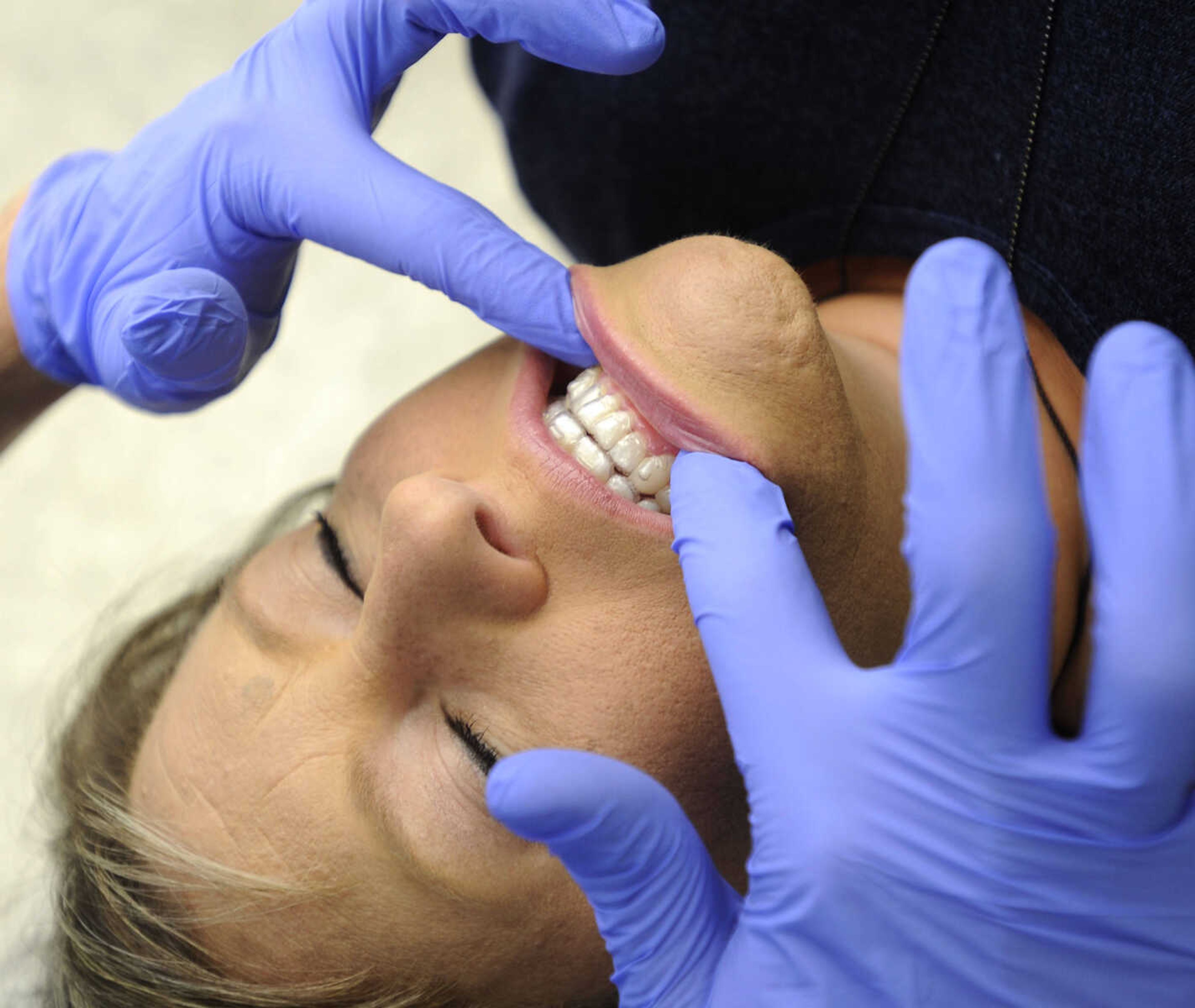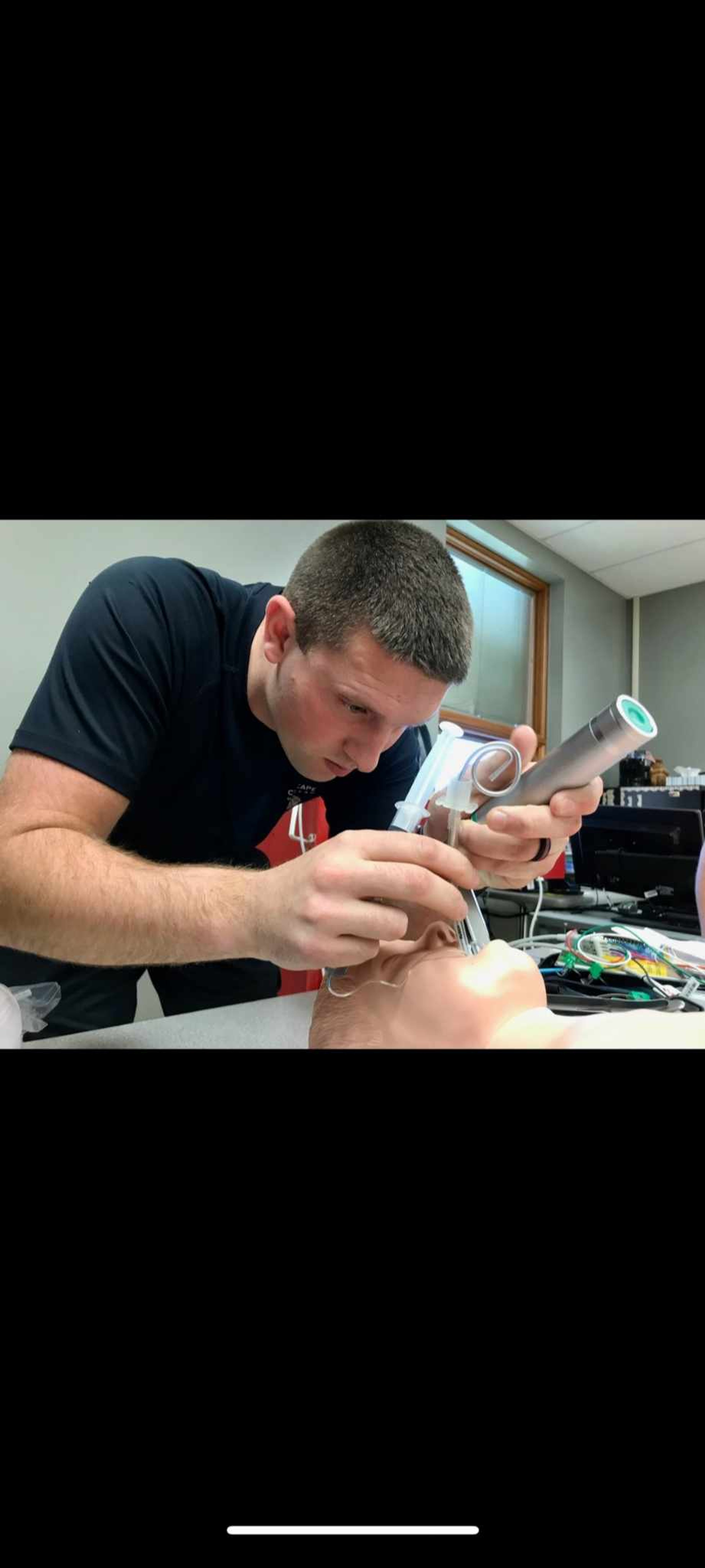Brace yourself: What you need to know about getting braces as an adult
Angie Davis wasn't so sure she wanted to be wearing braces at age 40, but when her teenage daughter began seeing an orthodontist, Davis decided she might as well get her own teeth taken care of, too. She'd always had crooked lower teeth and an underbite that caused her teeth to grind together, but when she was a teenager herself, she didn't want to go through the painful, complicated process to correct her underbite...
Angie Davis wasn't so sure she wanted to be wearing braces at age 40, but when her teenage daughter began seeing an orthodontist, Davis decided she might as well get her own teeth taken care of, too. She'd always had crooked lower teeth and an underbite that caused her teeth to grind together, but when she was a teenager herself, she didn't want to go through the painful, complicated process to correct her underbite.
Dental technology has come a long way since then, and this time, Davis opted for the SureSmile treatment, which is said to shave 25 to 30 percent off treatment time by using prescription wires that have been digitally designed and then crafted by a robot. Davis wore her braces for only 16 months and says it's the best thing she's ever done -- "I'm saving my teeth for down the road," she says.
Her orthodontist, Dr. Terry Spence of Innovative Orthodontics in Cape Girardeau, estimates that 25 to 30 percent of his patients are adults. Many are parents who always wanted braces and decide to get them after their children have finished treatment, while others have been referred from local dentists.
"We have a decent number adult patients, predominately females, who have taken care of their family for years, and once the kids are out of the household, they have the flexibility as far as time and finances to do what they've wanted to do for years," says Dr. Rob Etherton of Jackson Dental, which offers Invisalign treatment, a series of custom "aligners" that shift teeth into position.
While some patients seek treatment for cosmetic reasons, braces are often used, even recommended, for functional reasons. When teeth are out of alignment, they may wear unevenly, cause an uncomfortable bite, even damage the teeth and gums, says Etherton.
"As we age, our mouth is constantly changing, and especially if the teeth are crooked, it's a lot more difficult to clean around those areas," adds Dr. Ross Bennett of Bennett Family Dentistry in Cape Girardeau. "It can lead to periodontal conditions like gingivitis, and the areas that are more difficult to clean also get cavities more frequently."
Bennett says most cosmetic straightening can be taken care of with Invisalign, but patients requiring more comprehensive treatment may be referred to an orthodontist for traditional wire braces. Dr. Nathan McGuire of McGuire Orthodontics in Cape Girardeau believes traditional braces lead to nicer, more precise alignment, and clear braces are an option for those looking for less-noticeable braces. Some patients can even start out with Invisalign and switch to traditional braces to make any remaining adjustments, says Bennett.
"The nice thing about Invisalign is if you have an important business meeting or special event, you can pop the tray out and your natural teeth are right there," says Bennett. "When you have traditional braces, you can't have the orthodontist take them off and put them on the next day."
Whichever option you choose, dentists and orthodontists agree that it's especially important to keep up with dental hygiene at home and with regular checkups.
"The most important part with Invisalign is to make sure you are only drinking water while you have the trays in," says Bennett. "Because the trays fit to your teeth, if you drink soda, Gatorade or any sugary drinks, the liquid works its way inside the tray and the tray holds that sugar and acid against your teeth for a period of time. It's very important for patients if they're going to consume a beverage other than water to take the trays out, go ahead and drink what you're going to drink, then brush (your teeth) and put your trays back in."
With traditional braces, you may have to avoid certain foods that can damage the braces, and some patients need to wear rubber bands with their orthodontia. Once the braces are removed, you'll need to wear retainers to help prevent the teeth from shifting.
Braces also require a time commitment, says McGuire: about one and a half to two years wearing braces, plus time to come into the office for adjustments every few months. With Invisalign, it only works if you wear the trays, so that requires a commitment as well. Spence adds that the adjustment period is a little longer for adults, as their teeth are slower to move and more sensitive to pain.
Still, if straight, healthy teeth are what you're after, it may be worth the investment in braces. Etherton has seen patients up through their 60s who are still looking to close that gap in their front teeth or straighten out those crowded bottom teeth.
"There is no age where you become too old for braces or orthodontia," says McGuire.
Connect with the Southeast Missourian Newsroom:
For corrections to this story or other insights for the editor, click here. To submit a letter to the editor, click here. To learn about the Southeast Missourian’s AI Policy, click here.










